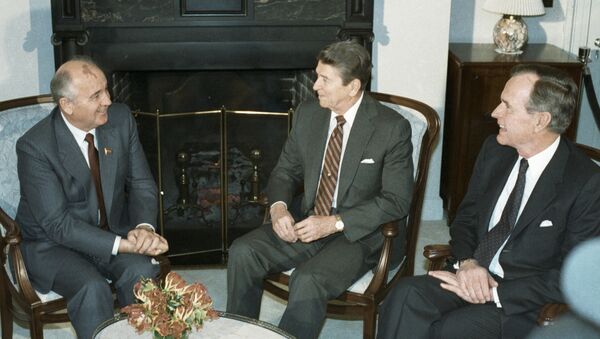The Treaty on the Reduction and Limitation of Strategic Offensive Arms (START I) between the Union of Soviet Socialist Republics (U.S.S.R.) and the United States (U.S.) was signed in Moscow on July 31, 1991 at a summit meeting between Soviet and U.S. presidents, Mikhail Gorbachev and George Bush, and entered into force on December 5, 1994. It was the first agreement of this kind between the U.S.S.R. and the U.S. The purpose of the Treaty was to ensure parity between the two sides’ strategic nuclear forces at levels 30% down on initially deployed forces.
The Treaty established equal ceilings on warhead and delivery vehicle numbers and ceilings on the throw-weight of ballistic missiles. Under the Treaty, neither side could have more than:
- 1,600 nuclear warhead delivery vehicles /deployed intercontinental ballistic missiles (ICBMs), ballistic missiles (BMs), submarines and heavy bombers/;
- 6,000 warheads, with 4,900 deployed on submarine-based ICMBs and BMs, 1,540 deployed on 154 heavy ICBMs in the U.S.S.R. (the U.S. had no heavy ICBMs), and 110 deployed on mobile ICBMs.
The Treaty left out sea-launched cruise missiles with a range of over 600 km. But a pledge was made not to deploy more than 880 SLCMs.
The collapse of the U.S.S.R. made START I outdated. On May 23, 1992, in Lisbon, Russia, Belarus, Kazakhstan, Ukraine and the U.S. signed the so-called Lisbon Protocol to START I, which came into effect on December 5, 1994. The Protocol records the inclusion of Belarus, Kazakhstan and Ukraine in the START Treaty and at the same time requests that they join the Nuclear Non-Proliferation Treaty. START I is valid for 15 years (until December 5, 2009). Given the parties’ agreement, its term can be extended for another 5 years when the 15 years are up.
On December 6, 2001, official representatives of Russia and the U.S. reported that their countries had fulfilled their START I obligations.
The Treaty on Further Reduction and Limitation of Strategic Offensive Arms (START II) between Russia and the U.S. was signed by the Russian and U.S. presidents on January 3, 1993 in Moscow, but never went into effect.
The Treaty bans using ballistic missiles with independently targetable warheads.
On September 26, 1997, in New York, the Russian Foreign Minister and the U.S. Secretary of State signed a Protocol to START II, providing for a postponement of the Treaty for 5 years, from December 31, 2001 to December 31, 2007. The delay was due to the fact that the first stage of the Treaty was to be completed within seven years of START I coming into force (it became effective on December 5, 1994), that is to say by December 31, 2001. This meant that should START II be ratified, for example, in 1997-1998, its implementation period would be cut back considerably – by 3 to 4 years.
The Russian side ratified the Treaty together with the Protocol on April 14, 2000 on the condition that the ABM Treaty be preserved. The U.S. ratified the Treaty in January 1996, but the Treaty in the same package with the September 26, 1997 Protocol was never submitted for ratification and therefore was considered non-ratified.
When the U.S. withdrew from the ABM Treaty on June 13, 2002, Russia announced it was stopping observance of its commitments under START II Treaty. On June 14, 2002, the Foreign Ministry of Russia issued a statement saying that following the U.S. abandonment of the ABM Treaty, “the Russian Federation sees no grounds for giving force to START II and no longer considers itself bound by the undertaking, stipulated by international law, to refrain from steps which could strip the Treaty of aim and objective.”
At a May 24, 2002 summit in Moscow, the presidents of Russia and the United States concluded an additional Strategic Offensive Reductions Treaty (SORT) to limit the number of operational nuclear warheads to 1,700-2,200 for each party. These ceilings are to be reached by December 2012, with the sides still retaining the right to decide the make-up and structure of strategic offensive weapons.
In 2005, Russia proposed that a new agreement is concluded with the U.S. to replace the START Treaty.




